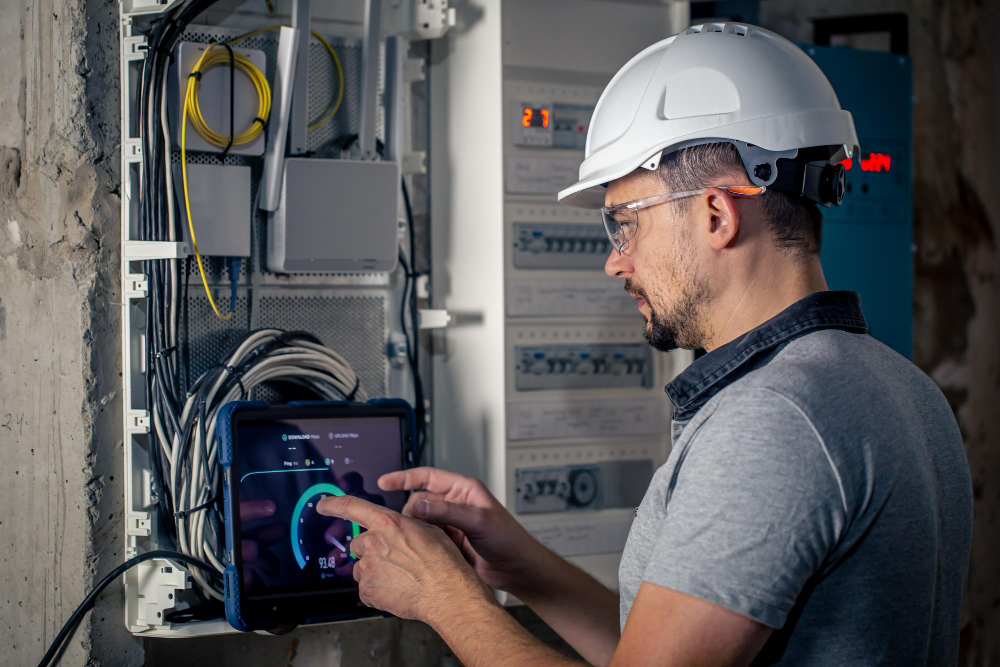In industrial automation, everything moves faster and safer when sensors give the right feedback. In many factories, the sensor people trust most is the inductive proximity switch. These contact-free devices find metal parts even in dusty or oily settings, which is why they show up on assembly lines, in robots, and on control panels everywhere.
This short guide runs through how these switches work, where they are used, what makes them valuable, and how to pick the right model so that B2B firms can squeeze more performance from modern sensor tech. Companies after dependable, tailored gear can check out https://www.omchsmps.com/de/path/proximity-switch/ for tough factory use.
How Does an Inductive Proximity Switch Work?
An inductive proximity switch works by sending out an invisible magnetic pulse. Inside the sensor, a coil creates an alternating field that fans out toward the target area. Slide a metal object into that zone, and it cooks up tiny swirling currents, called eddy currents, that pull at the field. The sensor’s smart circuits feel that shift and quickly flip on the output signal.
These sensors are built to find only metal targets-iron, stainless steel, copper, or aluminum. Because they work without touching the object, they stay reliable even in messy, oily, or shaking spots you often see on factory floors.
Key features include:
- High switching speed
- Resistance to dirt, oil, and water
- Solid-state design-no moving parts
- Compact, rugged build
For shops that need steady performance no matter the challenge, OMCH offers inductive sensors that follow tough industry rules and can be tweaked to fit special setups.
Industrial Applications of Inductive Proximity Switches
Across many factories and warehouses, these proximity switches keep automation smooth and safety high. Because they spot metal without making contact, they fit all kinds of jobs in every sector.
Automotive Manufacturing
Car assembly lines lean on inductive sensors to track parts, check metal pieces, and guide robots. You’ll also find them on welding stations, where every signal must be fast and exact.
Robotics and Machine Automation
In speedy robotic cells, these sensors tell the system where every arm is, helping to dodge crashes. Their quick read time and tough design keep the production flowing without slowdowns.
Packaging and Conveyor Systems
In high-speed packing lines, metal-detection systems keep products safe and prevent equipment damage. Inductive sensors are scattered along the conveyor to spot stray metal pieces and confirm that every packaged item contains the correct metal parts.
CNC Machinery and Tool Monitoring
Inductive proximity switches watch over tool positions, clamp states, and cutting-head motion in CNC workcells. By sensing without physical contact, they cut down wear on the machine and help each tool last longer.
Food and Beverage Equipment
Capacitive sensors are the go-to choice in food production, yet inductive switches step in when metal parts must be tracked on conveyors, fillers, and labelers, especially where water, steam, or chemicals make sealed, rugged sensing a must.
In every one of these settings, OMCH proximity switches deliver the toughness and accuracy that mission-critical operations demand.
Advantages of Inductive Proximity Switches for Industrial Use
For companies that keep factories running, choosing premium inductive proximities creates clear wins both on the floor and on the balance sheet.
Maintenance-Free Operation
Since they have no moving parts, inductive sensors rarely fail mechanically, so plants enjoy longer uptime and far lower maintenance costs.
Built to Last
OMCH inductive switches use industrial-grade materials so they shrug off dust, water, oil, and rough knocks. That level of toughness means they keep running day after day in factories and workshops.
Quick and Precise Detection
These sensors spot metal almost instantly, even when machines shake or squeeze them into narrow gaps beside heavy equipment.
Save Money in the Long Run
The list price of a proximity switch is higher than that of an old-school mechanical unit, yet fewer breakdowns, zero wear, and shorter downtime add up to real savings.
Simple Integration
With a range of sizes, cables, and voltages, OMCH sensors plug straight into most PLCs, robots, and other control gear without extra parts.
Decision-makers looking for reliable sensors that scale with demand should explore OMCHs customizable proximity-switch line today.
Key Factors for Picking the Right Inductive Sensor
Getting the best inductive proximity switch is crucial for smooth automation. Before buying, B2B teams should weigh these points:
Sensing Distance
Each model detects metal within a fixed distance the size, shape, and angle of the target. OMCH offers options for short, medium, and long ranges to fit tight or open spaces.
Target Material
Every inductive switch picks up metal, but how far away it works depends on what the metal is. Ferrous metals, such as iron, create a much stronger field than non-ferrous types like copper or aluminum.
Housing Type and Installation
Housings come in cylindrical, rectangular, flush, and non-flush styles. Pick the one that fits your layout, keeps dirt out, and survives any bumps or spills.
Environmental Ratings
Don’t ignore IP scores or how the device stands up to heat, cold, harsh chemicals, or heavy impact. OMCH models pass these tests, so they keep working even in tough shop floors.
Output Type and Voltage
Select an output that matches the control logic already in the panel. You’ll find PNP or NPN, normally open or closed, plus either AC or DC power options.
Keep these points in mind, and engineers and buyers can choose the right sensor to boost reliability and keep production running smoothly.
Integration with Industrial IoT
More factories are connecting proximity switches to Industrial Internet of Things (IIoT) networks. By streaming real-time data to the cloud, operators can spot issues earlier, plan maintenance wisely, and even trim energy costs.
Miniaturization and Smart Features
Sensor makers like OMCH now pack smarter functions into tinier proximity switches. New models come with built-in fault alerts, data logs, and even self-calibration, so users spend less time on manual checks.
Energy Efficiency and Wireless Options
With green goals moving front and center, low-power wireless proximity switches are winning fans in big automation lines. Wireless links cut cable clutter, while sleep modes stretch battery life in hard-to-reach spots.
That blend of classic durability and cutting-edge smarts makes inductive sensors a must-have in any smart factory.
Conclusion
Inductive proximity switches anchor today’s industrial automation. Their touch-free sensing, tough bodies, and lightning-fast response fit everything from pick-and-place robots to high-speed CNCs. For companies chasing efficiency, safety, and bold innovation, these sensors deliver serious bang for the buck.
OMCH stays at the forefront, crafting customized inductive proximity switch solutions that match the demands of high-output production lines.
For more, visit Pure Magazine




